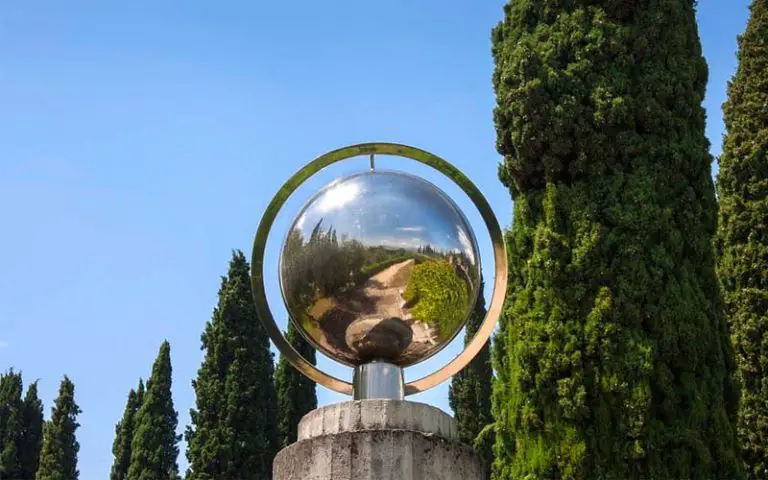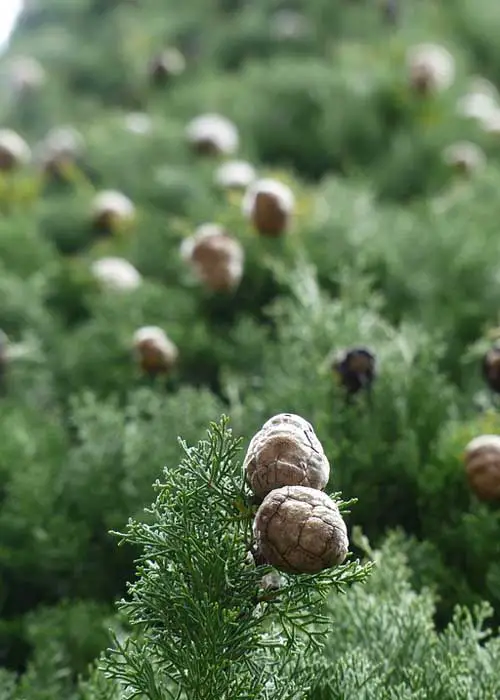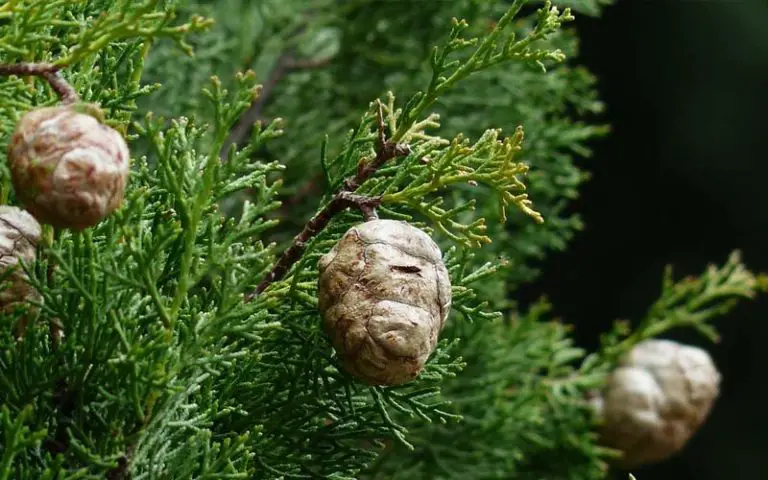Italian Cypress Bonsai

The bonsai tree is undoubtedly one of the best plants to elevate the look and feel of an environment, and the Cypress Bonsai tree is the most suitable plant for beginners to try their hands at cultivating a Bonsai.
The Cypress has various different species, such as the tall and narrow Italian Cypress and the Bald Cypress. Another species of Cypress commonly used for bonsai plants is the Hinoki cypress, which is one of the smallest plants of the family.
The Cupressus sempervirens have many common names such as Italian Cypress, Mediterranean, Tuscan, Graveyard Cypress, or Pencil Pine. It is a species of cypress native to the Mediterranean, Greece, Turkey, Cyprus, Egypt, Israel, and Italy.
Here’s what you’ll find in our Italian Cypress Bonsai species guide:
Here’s what you’ll find in our Italian Cypress Bonsai species guide:
01
02
03
04
05
06
07
Quick Italian Cypress Bonsai Care Sheet
For a quick summary of the basics to care for your Italian Cypress Bonsai, see the care sheet below.
Recommended soil
Watering
Potting season
Shaping and pruning season
Light
Fertilizing
Propagation methods
Pests and diseases
Growth patterns
Recommended styles
Scientific Classification
● Kingdom: Plantae
● Clade: Tracheophytes
● Division: Pinophyta
● Class: Pinopsida
● Order: Pinales
● Family: Cupressaceae
● Genus: Cupressus
● Species: C. sempervirens

How to Care for an Italian Cypress Bonsai
The Italian Cypress Bonsai is great for those starting the art of the ancient caring techniques for Bonsai trees. If looked after your Bonsai will remain a healthy and beautiful miniature that will increase in beauty as it matures through the years. Some outdoor Italian Cypress Trees in natural form are reported to be over 1000 years old.
Best Soil
Italian Cypress Bonsai trees will grow in any type of soil, as long as it is in well-draining soils and pots. It is recommended to use high-quality Bonsai soil so that it drains perfectly. Italian cypress trees do not like excessive moisture at their roots, so make sure the pot has bottom drain holes.

Watering
Never neglect to water your Italian Cypress Bonsai tree, as it has to be watered before the soil completely dries out. Try using a moisture meter to get to know the requirements of your bonsai tree. Water the tree until the water runs out the bottom holes of the pot. The water needs to drain away quickly, but the soil has to be left saturated.
During the winter months, when your tree is spending time inside, it is recommended to place it in a humidity tray. A humidity tray is a tray filled with gravel and water. Your tree rests on the gravel but receives the humidity from the evaporating water. This provides extra moisture around the tree to reduce the amount of moisture lost to modern heating systems.
Repotting
All Bonsai trees require periodical repotting when their root system has filled the pot to supply fresh soil and to encourage a more compact root system. As your Italian Cypress tree increases in size, repot it in a larger container until the tree reaches the size you desire. Then perform pruning every two to three years to keep it that size. Try to use homemade or purchased containers with removable sides to make accessing the roots easier.
Autumn or Winter is the best time for reporting as the trees go dormant in Winter. The stress of being uprooted is far less at this time than it would during the seasons of their active growth. Root pruning is done by removing the tree and all soil from the pot. Remove the outer and bottom root mass of the tree, taking care not to remove more than a quarter of the roots.
Place screens and a thin layer of gravel over the draining holes and fill the pot with enough soil to elevate the tree to its previous height in the pot. Return the tree to the pot and fill in the root mass and rest of the pot with fresh soil. Thoroughly water the tree and place enough ground cover to cover the surface of the pot to help prevent soil erosion when watering.
Shaping and Pruning
Ensure that your Bonsai trunk has developed well enough before pruning to avoid a straggly look in the end. It is best to prune during the Summer and shape it later, right before dormancy. The Italian Cypress twigs sprout in sharp and acute angles, making it easy to develop a gnarled-looking branch. Pluck the leaves that grow from the trunk unless you want them to further grow into a branch.
A visible knee is a tell-tale sign that the tree is mature. A knee is developed by not repotting or root pruning the tree for several years. The tree will become root-bound with many of the roots bent nearly double. Carefully coach one doubled bend before letting it jut through the moss into the form of a knee.
You should tie the branches using raffia twine at the branch tips in order to pull it down. Shape the foliage by pinching back new growth. The new growth tends to sprout at the location of the most recent pruning.
Location and Sunlight
The Italian Cypress Bonsai prefers outdoor life during Spring and Summer. It loves direct sun for at least four to six hours a day. The Italian Cypress will thrive indoors in high light conditions and where the nighttime temperatures will not go below 45 degrees. It is recommended that the Bonsai is placed on a windowsill or on a table in front of one. If you do not have a sunny enough window, you might need to install grow lights to provide sufficient light to keep your Bonsai healthy.
Fertilizing
Applying fertilizer is required to keep your Bonsai healthy and beautiful in its small pot with limited soil. A general-purpose liquid fertilizer used at half their recommended strength will suffice. Apply at least once a month except during Winter. Italian Cypress Bonsai enjoys foliar feeding, with a water-soluble fertilizer applied every second month as a spray. Fertilize once a week in Spring and gradually reduce it to once every other week during late Spring and Autumn. Do not fertilize during Winter.
Propagation Methods
To grow a new Italian Cypress, start by taking a cutting from mid-summer to early fall. Cut a long branch from the bottom of a healthy Italian cypress tree and cut the branch into several pieces. Each cutting must have at least three or four sets of needles. Strip the needles from the lower half of each Italian cypress cutting and dip these ends in powdered rooting hormone before planting.
The planting medium needs to be moist and consist of a mixture of half regular garden soil and half clean, coarse sand. Cover the planting container with clear plastic and place indoors in a cool, humid location.
Seeds can also be used, but they germinate slowly and may take up to a year from germination to planting.
Pests and Diseases
The Italian Cypress Bonsai is prone to Seiridium canker that infects the bark, causing lesions (cankers) on trunks. Freeze damage, insect feeding, pruning cuts, wind damage, and other sources of wounds all help to increase the likelihood of infection.
You can avoid infections by placing trees in proper soil, watering generously during droughts, and avoiding wounds. Botryosphaeria canker is similar to Seiridium canker and may occur on vigorously growing trees. Pruning and sanitation are the only measures available for minimizing disease progress.
Cercospora needle blight and phomopsis blight might also occur, and these affect the needles. Treat blight with the removal of diseased plants, fungicides, and watering to avoid wet, humid conditions.
A fungal-like organism causes Phytophthora root rot in soils that retain high soil moisture levels for long. Affected roots need to be removed, and the tree repotted. Bagworms and mites also cause problems sometimes.
Growth Patterns
Italian Cypress Trees foliage grows in dense sprays and is dark green in color. Trees naturally grow tall and are slender. The leaves are scale-like and produced on rounded shoots. The oddly shaped cones are brown colored with a dry, hard exterior, and the seeds are tiny, flattened, and brown. The seeds and cones lack resin blisters.
Recommended Styles
The natural tall and slender growth of the Italian Cypress adapts well to shaping and being twisted into various styles. This Bonsai is styled as an informal upright twin-trunk, formal upright, and group style, mostly called the bonsai forest. It is also well suited for the cascade and semi-cascade styles.
Considerations for Growing an Indoor Italian Cypress Bonsai
The Italian Cypress requires direct sunlight for at least four to six hours a day. If required, grow lights might have to be provided to compensate for the lack of sunlight. It does not tolerate extremely cold temperatures.
This Bonsai needs to be watered frequently, so the soil remains moist but not waterlogged. Drainage is extremely important.
Common Issues When Caring for an Italian Cypress Bonsai
The bark of the Italian Cypress Bonsai is delicate and requires a gentle hand when it comes to pruning and shaping. The tree grows fast, and wiring will have to be monitored to not leave scars on the branches.
The needles of this Bonsai will fall off in temperatures below 10 degrees Fahrenheit. If all the tree foliage turns brown and brittle, the tree will die. Cypress trees can develop needle blight if the soil remains waterlogged.
Interesting Facts About Italian Cypress Bonsai
The Italian Cypress Bonsai is an ancient tree, and there are many interesting facts about it, such as:
- Sempervirens in Latin means evergreen
- In Iran, there is a 4000-year-old, gorgeous Mediterranean Cypress
- The cypress tree is associated with mourning because of its use in cemeteries
- The Italian Cypress has fire-resistant properties and is used for construction, and furniture making
- It is also well known as an anti-dandruff, anti-ageing, astringent, anti-seborrheic, and a fragrance

FAQs about Italian Cypress Bonsai
Here are some common questions asked about the Italian Cypress Bonsai.
The Italian Cypress is one of the best and easiest trees to Bonsai. It is ideal for beginners to the art of Bonsai and does not need much specialized care.
The Italian Cypress can be kept small by growing it in a small pot, regularly trimming the roots, and pinching back the tree.
There are plenty of cypress species you can bonsai, such as the Italian and Bald Cypress species. Their conical shapes are easy to maintain, while you can pinch branches back to keep the pyramid styles. They’re ideal for small spaces.
While the Italian Cypress bonsai loves being outdoors, you can keep it indoors as long as there’s plenty of sunlight. It will enjoy the inside of your home when temperatures drop beneath 45 degrees. You can keep it on a windowsill or table where it can receive several hours of morning light.
If you provide the proper care, the Italian Cypress will grow at about three feet per year. It’s incredibly fast-growing in the spring and summer, and you’ll need to pinch the leaves and twig back regularly to retain the shape and size.
You’ll need to collect the cones when they are ripe and just as they start opening up. Ensure you place them in a container so you don’t lose the seeds when they drop. You can then place them in the soil after a stratification period, which usually takes about three weeks.
The Italian Cypress bonsai is one of the most popular cypress trees to place in pots. It has an elegant design, and the roots won’t suffocate the soil within the first year. You can also keep them small by regular pruning.
The Italian Cypress can tolerate poor soil conditions, as long as it isn’t drowning in water. You can use a regular mix, ensuring that there’s sufficient drainage. When you plant it in the soil for the first time, it will require regular water for the initial months.
Cupressus sempervirens is in the Cypress family of trees, which is different from the Pine family. Technically, the Italian Cypress carries a small, round, cypress cone, which varies from the conical pine cone. They grow as huge as large marbles, which are much smaller in size than a pine cone.
For the most part, under- and overwatering are the most significant danger to an Italian Cypress. If you let the soil dry out too much or drown it for days on end, you’ll notice how much your bonsai suffers. The leaves will turn brown and fall off.
If you provide proper bonsai care and maintenance, your Italian Cypress bonsai can live up to 150 years. There are some trees that have lived longer than that in the wild, but bonsais are generally restricted in pots and limited nutrients.






